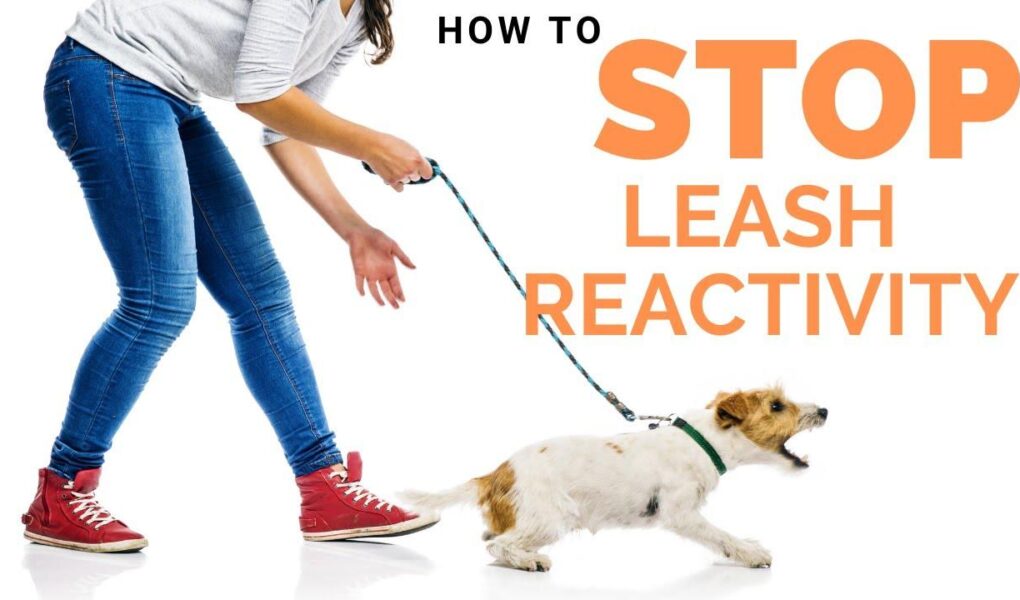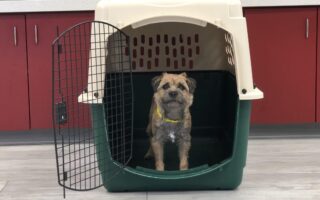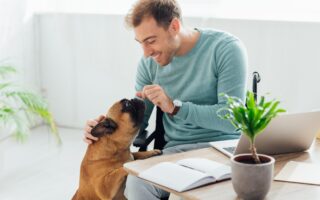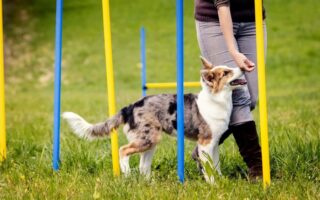Understanding Leash Reactivity: Unraveling the Challenge of Canine Communication
In the vibrant world of canine companionship, few behaviors prompt as much confusion and frustration as leash reactivity. Picture this: a blissful stroll through the park, sunlight streaming down, when suddenly your furry friend erupts into barks and lunges at a passing dog or a bewildered jogger. Though it might seem like a mere case of overexcitement or aggression, leash reactivity is a complex communication issue deeply rooted in instinctual behavior, fear, and environmental factors. As pet owners, we often grapple with the mystifying motivations behind this common challenge, striving to transform those tension-filled moments into opportunities for connection and understanding. In this article, we will delve into the intricacies of leash reactivity—its causes, implications, and effective strategies for fostering a more harmonious walking experience for both you and your four-legged companion. Join us as we embark on a journey to decode the barks and growls of our beloved pets, opening up avenues for better communication and mutual respect on the leash.
Table of Contents
- Understanding the Roots of Leash Reactivity in Dogs
- Effective Strategies for Managing Leash Reactivity
- The Role of Training Techniques in Reducing Reactivity
- Creating a Calm Environment for Leash-Sensitive Dogs
- Q&A
- The Conclusion
Understanding the Roots of Leash Reactivity in Dogs
Leash reactivity in dogs often stems from a complex interplay of environmental factors, experiences, and instincts. Understanding these roots is essential to addressing the behavior effectively. Some common contributors include:
- Fear or Anxiety: Dogs may react when they feel threatened by other animals or environments, often due to past negative experiences.
- Frustration: A dog that wants to engage with another dog yet feels restricted by the leash may exhibit reactivity.
- Protectiveness: Some dogs instinctively guard their owners from perceived threats, leading to barking or lunging.
Additionally, a dog’s socialization during critical development periods plays a significant role in shaping their behavior on a leash. Factors such as:
- Limited Exposure: Insufficient interaction with other dogs can lead to fear-based reactions in unfamiliar settings.
- Negative Associations: If a dog has encountered aggressive behavior from others while leashed, it may develop a defensive reaction.
- Breed Tendencies: Certain breeds are more predisposed to react due to their instinctual behaviors.
| Contributing Factor | Behavior Triggered |
|---|---|
| Fear | Barking, lunging |
| Frustration | Pulling, whining |
| Protectiveness | Aggressive posturing |
Effective Strategies for Managing Leash Reactivity
Addressing leash reactivity requires a well-planned approach that prioritizes both the dog’s and the handler’s comfort. One effective strategy involves desensitization paired with counter-conditioning. Start by identifying triggers that prompt reactive behavior, such as other dogs, pedestrians, or bicycles. Gradually expose your dog to these triggers at a distance where they feel safe and are not reactive. Reward calm behavior with treats or praise to create positive associations with previously alarming stimuli. Over time, as your dog becomes more accustomed to these triggers, you can slowly decrease the distance, always ensuring they are comfortable and rewarded for maintaining calmness.
Another proven method is to implement alternative focus techniques through the use of commands like ”look” or “leave it.” When your dog begins to show signs of reactivity, redirect their attention to you by using a favorite toy or treat. Consistency is key; practice this exercise regularly in various environments. Creating a safe space is also essential; utilize specific gear such as a front-clip harness or a head halter to help maintain control. Training classes or working with a professional dog trainer can further enhance these strategies, providing both guidance and support in managing leash reactivity effectively.
The Role of Training Techniques in Reducing Reactivity
Training techniques play a crucial role in managing leash reactivity by helping dogs learn appropriate responses to triggers. By employing methods such as desensitization and counter-conditioning, pet owners can gradually expose their dogs to stimuli that provoke reactive behavior in a controlled manner. This approach allows dogs to associate the presence of other animals or people with positive experiences, rather than fear or anxiety. Some effective techniques include:
- Positive reinforcement: Rewarding calm behavior with treats or praise reinforces desirable actions.
- Controlled exposure: Gradually introducing the dog to triggers at a distance can help diminish their reactivity over time.
- Clicker training: Using a clicker can provide precise feedback, marking the exact moment a dog displays calm behavior.
Furthermore, consistency in training sessions is essential for success. Engaging in short, frequent exercises helps maintain focus and prevents the dog from becoming overwhelmed. Creating a structured training environment leads to better outcomes. Here’s a quick reference table highlighting key training methods and their benefits:
| Training Method | Benefit |
|---|---|
| Desensitization | Reduces sensitivity to triggers. |
| Counter-conditioning | Changes the emotional response to triggers. |
| Positive reinforcement | Encourages repeat of desired behaviors. |
Creating a Calm Environment for Leash-Sensitive Dogs
Creating a serene atmosphere is essential for helping leash-sensitive dogs. This can be achieved by eliminating distractions and fostering a sense of security. Consider these practical steps:
- Choose Quiet Routes: Opt for less populated walking paths where sudden encounters with other dogs or people are minimal.
- Manage Your Distance: Ensure a comfortable space between your dog and potential triggers by monitoring their body language closely.
- Utilize Calming Aids: Integrate calming collars, pheromone sprays, or anxiety wraps that can help soothe your dog’s nerves.
- Incorporate Slow Movements: Walk at a leisurely pace, allowing your dog the time to observe the surroundings without feeling rushed.
Building a safe haven at home can also contribute to overall tranquility. This allows the dog to decompress in a designated area when they arrive back from walks or encounters. Here’s how to set it up:
| Element | Purpose |
|---|---|
| Soft Bedding | Provides a comfortable retreat for relaxation. |
| Calming Music | Creates a soothing auditory environment. |
| Safe Toys | Engages the mind and promotes a positive state of being. |
Q&A
Q&A: Understanding Leash Reactivity in Dogs
Q: What is leash reactivity?
A: Leash reactivity is a behavioral response where a dog exhibits heightened arousal or aggression when on a leash, often triggered by the presence of other dogs, people, or stimuli. While it may appear aggressive, leash reactivity often stems from fear, stress, or a desire to protect territory.
Q: What causes leash reactivity in dogs?
A: Various factors contribute to leash reactivity, including a lack of socialization, past trauma, fear-based aggression, or frustration stemming from being restrained. Dogs may feel vulnerable on a leash, causing them to react defensively or overly excitedly.
Q: How can I identify if my dog is leash reactive?
A: Look for specific behaviors such as barking, lunging, growling, or rigid body posture when encountering other dogs or stimuli. These reactions can range from mild to intense, and recognizing your dog’s signs early can be crucial for addressing the behavior.
Q: Is leash reactivity the same as aggression?
A: Not necessarily. While leash reactivity can manifest as aggression, it often arises from fear or anxiety rather than a desire to harm. Many reactive dogs are friendly and would enjoy greeting others if not on a leash, indicating that the reactivity is more situational than inherent.
Q: Can leash reactivity be fixed?
A: Yes, with patience and consistent training, leash reactivity can often be managed or even resolved. Approaches may include counter-conditioning, desensitization, and positive reinforcement strategies. Working with a qualified dog trainer can also lead to more effective, tailored solutions.
Q: What training techniques are effective for leash reactivity?
A: Techniques often include using treats to reward calm behavior, practicing “look at that” exercises, and teaching alternative behaviors such as “sit” or “focus.” Gradual exposure to triggers while remaining at a distance where your dog feels safe is crucial for reducing reactivity over time.
Q: How can I prevent leash reactivity from developing in the first place?
A: Early socialization is key. Expose your dog to various environments, other dogs, and people in a controlled manner. Positive experiences during walks and gradual acclimation to different stimuli can help prevent the development of leash reactivity.
Q: Should I avoid taking my leash-reactive dog out in public?
A: While it may be tempting to avoid potentially stressful situations, it’s important to help your dog learn to cope with the outside world. Instead of avoiding public spaces entirely, work on gradual desensitization in less crowded environments, building their confidence and comfort over time.
Q: What equipment can help manage leash reactivity?
A: Specialized harnesses, head halters, and double-ended leashes can provide better control and reduce stress for both you and your dog. It’s essential to choose equipment that allows you to guide your dog gently, making walks more pleasant and manageable.
Q: When should I seek professional help for leash reactivity?
A: If leash reactivity significantly disrupts your walks or poses a risk to you or other dogs, seeking help from a professional dog trainer or behaviorist is advisable. They can assess your situation and create a customized plan to address your dog’s specific challenges.
Conclusion:
Understanding leash reactivity and its underlying causes can transform your walking experiences. By employing thoughtful training strategies and focusing on positive reinforcement, you can help your dog become more confident and less reactive in the presence of distractions.
The Conclusion
understanding leash reactivity is essential for fostering a harmonious relationship between you and your canine companion. By recognizing the underlying causes and implementing effective training strategies, you can turn walks into enjoyable adventures rather than a tug-of-war competition. Remember, every dog is unique, and patience is key in this journey. Embrace the process, celebrate the small victories, and always keep your focus on creating a safe, confident environment for your dog. Together, you can transform reactivity into calmness, ensuring that every outing is a step toward a more balanced relationship. As you embark on this path, may each walk bring you closer, not just to your destination, but to a deeper understanding of your beloved pet.



